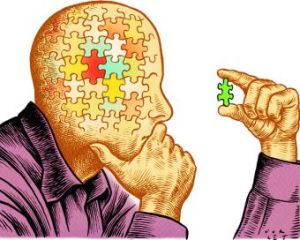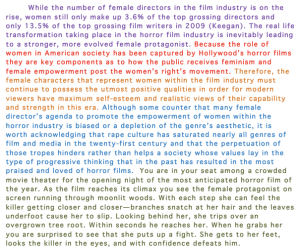
Consider this section of an argumentative research essay that is concerned with the presence of gender norms throughout the toy industry. You are shown the ending of paragraph 1, the entirety of paragraph 2 where the writer has not blended their quote, and the beginning of paragraph 3. This writer has not transitioned by idea from concluding sentence to topic sentence and has failed to fully develop paragraph 2. For this example the sentences in blue act as transition from one paragraph to the next, the sentences in red are topic sentences/the main claim of the paragraph, orange is supporting material or exposition, and green is source material that acts as evidence to support the claim of the paragraph.
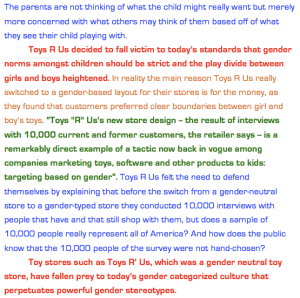
After reading this example, what are some ways that the writer could revise this section of their paper so that the claim in paragraph 2 is fully expressed and supported, and the transitions from paragraph to paragraph are logical as well as clear?
To answer this question first we must consider why a writer must blend their source material.
Imagine reading two essays on the same issue.
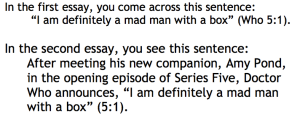
Which essay is stronger? Why?
The second essay is more effective, as the author blends the quotation with their own text. By doing so, readers know who says the quote and why we should trust them—without interrupting the reading to scan the Works Cited (which would just give publication data, not author ethos). Also, readers can see how the quote is relevant to the writer’s own essay.
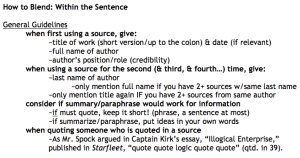
How to Blend: Within the Essay
Three-Step/Three-Sentence Method:
1. introduce quote
2. give quote with signal phrase (According to X, “quote quote” (72).
3. connect/comment on quote
For Example:
In “Allies in the Struggle,” her 2002 article, researcher Tricia Draughn describes the surprisingly negative state of affairs for LGBTQ college students. Draughn argues that universities “are uninviting at best and treacherous at worst for LGBTQ students” (10). Discrimination, though, rarely is limited just to one group, so we must realize such prevalent discrimination against LGBTQ students affects the safety of all members of the campus community.
Now that you are aware how source material can be blended by using attributive tags and signal phrases to introduce the source’s author and title as well as connecting the ideas that the quoted or paraphrased material is presenting to the main claim of the paragraph let’s look at a section of a paper that does this successfully. As with the last example, the sentences in blue act as transitions from one paragraph to the next, the sentences in red are topic sentences/the main claim of the paragraph, orange is supporting material or exposition, and green is source material that acts as evidence to support the claim of the paragraph.
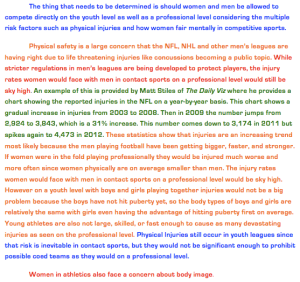
Ways to announce a quote:
Direct Quote:
Lincoln forewarned, “A house divided against itself shall not stand” (212).
- Notice that the signal phrase is followed by a comma and the first letter of the quote is capitalized because it is capitalized in the original.
Direct quote introduced with a colon after an independent clause:
Lincoln expressed this sentiment in a clear statement: “A house divided against itself shall not stand” (212).
- Here the quote is introduced by a complete sentence that sets up the idea in the reader’s mind.
- Again, the first letter of the quote is capitalized since it is capitalized in the original.
Indirect quote with a signal phrase:
Lincoln forewarned that “a house divided against itself shall not stand” (212).
- Notice that here there is no comma and no capital letter with the opening of the quote. These are not necessary with an indirect or blended quote.
- Notice that the word “that” connects the signal phrase to the quoted material in an indirect quote.
Fully blended quote (no signal phrase):
A nation in the middle of the civil war is “a house divided against itself” (Lincoln 212).
- Notice that the quote is completely blended into the writer’s sentence structure, and no signal phrase is used.
Block Quote:
In his latest book, Author Unknown: On the Trail of Anonymous, an account of his “second career” as a literary sleuth, Foster explains one of the fundamental warrants for his analyses:
I venture to say that no two individuals write exactly the same way, using the same words in the same combinations, or with the same patterns of spelling and punctuation. No two adults in the same family (or corporation or motorcycle gang) have read the same books. No one writes consistently fluent sentences. It is that pattern of difference in each writer’s use of language, and the repetition of distinguishing traits, that make it possible for a text analyst to discover the authorship of anonymous, pseudonymous, or forged documents. (5)
As Foster explains throughout Author Unknown, we are what we read when we write. Foster’s innovation was to test this claim by generating statistical representations of Shakespeare’s language use, and then to compare the Elegy to those representations.
- The block quote means that you separate out and indent a quote.
- Any quote of more than four lines should be incorporated into the essay in block form.
- Remember to indent the whole block.
- No quotation marks are required around the quote.
- The block quote should be introduced, not just inserted in the paper.
Other reminders:
Essays and book chapters are put in quotation marks (“A Real Meritocracy”), not italicized or underlined.
Books, newspapers, magazines, periodicals, plays, novels, and other titles of works are italicized or underlined (e.g. MLA Handbook).
Once you have given the title of an essay or chapter in your summary, you do not need to mention it again. You DO need to continue to provide the author’s last name.
*Refer to Purdue OWL for more notes and examples of quote blending

